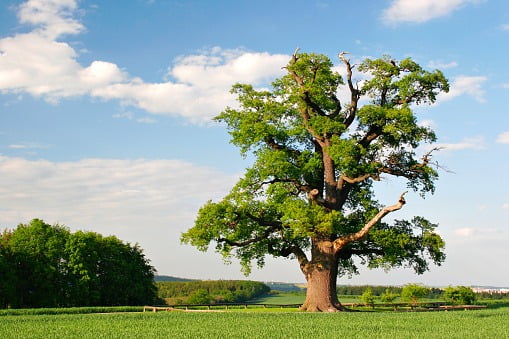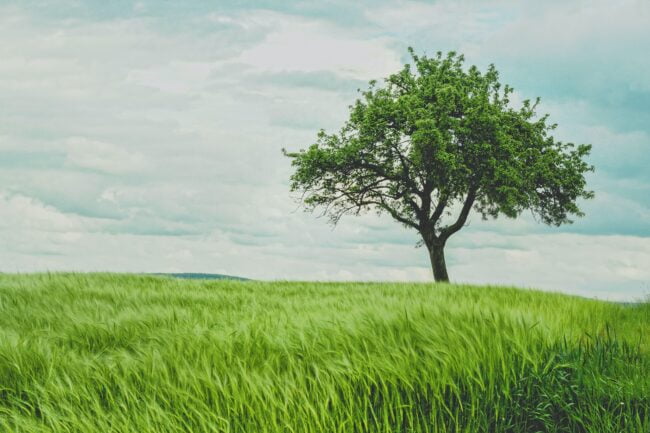This popular evergreen shrub grows to 20 feet and is nearly as wide as its crown. It is scientifically called Salvadora persist.
It depends greatly on the plant variety and growing conditions to determine the size of a mature mustard tree. Others reach impressive heights of 30 feet. Trees can grow from six feet to a paltry six feet.
It’s prudent to learn all you can think about mustard trees before you add them to your garden. Find everything you need to know about mustards in this resourceful guide.
The mustard tree is the subject of this post. Every mustard cultivator needs to know some of these details. After reading some fascinating facts, you might fall in love with mustard bushes.
1. Dimensions and appearance of leaves
Mustards can reach great heights at 20 feet tall and nearly as wide. Mustard trees can grow up to 30 feet tall, depending on their varieties and climate conditions.
On opposite ends of the stem, mustard trees produce oval leaves. As the tree ages, its leaves gradually turn yellowish green.
There is quite a bit of flesh in mustard leaves. Three inches by 1 inch is the average size of a regular leaf.
2. The appearance of flowers and fruits
Plants that produce mustard flowers are known as mustards. A 12-inch-long tendril carries green or yellow flowers.
Its striking translucence makes it identifiable as a pink or scarlet berry that grows to 12 inches in diameter.
3. The origin of
Persia (modern-day Iran) is the origin of mustard trees. This region still has a fair amount of shrubs.
Mustard trees are commonly found in the East Indies, northern Africa, and the Orient.
However, mustard is common worldwide because of its remarkable resilience and adaptability. Canadians, Americans, Britons, and Danes cultivate the tree commercially.
4. Its etymology
‘Museum gardens translates loosely to ‘burning wine’ and is derived from two Latin words.
Powdered mustard seeds mixed with wine grapes produce a unique flavor.
5. Optimal conditions for growth

The tree’s native region, Iran, has a hot and arid climate that is ideal for mustards. Sandy soil with good drainage also works well.
Mold grows rapidly on mustards. Humidity doesn’t suit them.
Hardline zones 7 to 11 are ideal growing conditions for mustards in the south of the United States.
6. Various types
Mustard varieties number around 40. Black, brown, and white mustards are the most common.
Numerous other mustard cultivars exist besides these three. There are several types of Florida Broadleaf, for example, Southern Giant Curled, Evergreen, Giant Red and Tendergreen.
7. How to cultivate
Generally speaking, mustard plants do not require much maintenance once they have reached maturity. Nevertheless, taking care of the trees from an early age may be beneficial.
The best way to ensure quick germination is to soak mustard seeds. Before transplanting the seeds into the garden, the seeds should be grown in nursery pots for a couple of weeks.
Ensure that weeds and bushes are removed before planting mustard seedlings. Trees should be spaced 12-15 feet apart.
Encourage root penetration by watering regularly (preferably weekly). Similarly, mustard roots are water-seeking and deep-penetrating. Mustard roots may damage septic systems, so do not plant them near them.
8. Stages of growth
It takes a mustard tree eight years to reach maturity.
The following are among them:
- The germinating process
- The development of leaves
- Extending stems
- Emergence of inflorescences
- The flowering process
- Development of fruits
- The ripening process
- The senescence process
9. The maturation process
Few garden trees grow faster than mustards.
The ground is usually covered with plants a few weeks after plants are planted. A plant’s roots become firmly rooted as soon as they reach the soil.
It takes 80 days for yellow mustard varieties to mature. Some mustard varieties are mature within 90 to 95 days, like brown and Oriental mustards.
Six weeks after planting, mustard flowers will begin to bloom.
10. Span of life
There are a variety of annual mustard plants. Hence, they live for 80 to 95 days (or one life cycle per year).
It is also possible for some varieties to have two life cycles a year, meaning they have two life cycles per year.
11. The reproduction process
A mustard tree is a bisexual plant that can reproduce both males and females.
Although the trees pollinate themselves somewhat inefficiently, they can also pollinate other plants. Bees are the most common pollinators.
12. The uses of
There are many uses for the mustard tree. Toothbrushes are made with extracts from the plant. Its antibacterial properties may help prevent plaque because the tree is antibacterial.
Nutrient supplements can also be made from mustard fruits and seeds. In addition to raw consumption, they can also be used in various cuisines as ingredients. Dietary fiber and vitamins A and C are abundant in the seeds, in addition to calcium, iron, potassium, magnesium, and selenium. Dried mustard fruit is a popular flavor enhancer and appetite booster in Punjabi regions.
Mustard may benefit from the following medical conditions:
- Hypertension, a blood disorder
- Migraines and headaches
- Symptoms of rheumatism
- Symptoms of asthma
Home gardens can benefit from mustard as well as ornamental plants. Low branches and a widespread make it a great choice for home gardens, offering natural shade.
13. The benefits of spirituality
Mustards may have spiritual benefits in addition to their therapeutic and nutritional properties.
A house’s perimeter may ward off evil spirits in India and Denmark if mustard seeds are scattered along it.
14. Concerns about safety
Human consumption of mustard oil is unsafe, in numerous studies.
Mustard oil contains erucic acid, according to the FDA. It is possible to develop heart disease after consuming this acid for a long period.
15. The production process

Canada is the largest producer of mustard seeds in the world, even though mustards are native to Asia.
About half of the mustard seeds consumed worldwide come from this country.
16. The consumption of
The most widely consumed plant in the world is mustard. Annual worldwide consumption of mustard-based products is 700 million pounds.
North America consumes the majority of mustard in the world.
17. An artist’s recognition
In Wisconsin, a museum dedicated solely to mustard trees is called the Mount Horeb Mustard Museum.
In addition to the museum’s collection of over 5,000 mustard plants from 60 countries, it features specimens from 50 states and 50 countries.
18. Recognition of literary works
There are many references to the mustard plant in the Bible. Jesus’ parables in the gospels contain classic allusions to mustard.
Numerous references to the mustard tree can also be found in the book published in 1912, “The Mustard Tree: An Argument on Behalf of Christ.”
19. The recognition of linguistics
An individual unable to address a problem is said to be unable to “cut the mustard.”
The phrase mustards and this phrase have yet to be linked by language experts. The plant is also extraordinarily easy to cultivate and slice, given how easily I can cut it.
20. The mustard seed isn’t the tiniest.
There is a general opinion that mustard seeds are the smallest seeds. A 2-millimeter diameter seed. A mustard seed of faith is all you need to move mountains, according to the Bible.
It is not the smallest seed, as many people believe. Even though mustard seeds only have a diameter of 2 mm, they are still much larger than orchid seeds.
The Conclusion
If you have been thinking about adding mustard trees to your garden but did not have the motivation, what’s the alternative?
Our goal is to encourage you to decide on mustard after reading the fascinating mustard facts.


